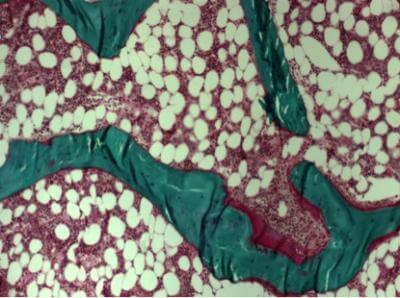In a study carried out at the University of Eastern Finland, bone histomorphometry and infrared spectroscopy revealed abnormal bone properties in children with vertebral fractures and in children after solid organ transplantation. Bone compositional changes in children with vertebral fractures and after different types of organ transplantation have not been reported previously.
Bone samples were investigated using bone histomorphometry, a microscopic method that provides information about bone metabolism and remodelling. In children with vertebral fractures, there were changes in bone composition, such as lower carbonate-to-phosphate-ratio and increased collagen maturity, which could explain the increased fracture risk. The results also suggest that in children who have undergone kidney, liver or heart transplantation, the various changes related to bone microarchitecture and turnover may be more important predictors of fracture risk than lowered bone mineral density alone. Early detection of such changes in bone quality could help prevent fractures.
Osteoporosis is the most common metabolic bone disease characterized by abnormal bone formation and resorption which lead to increased risk of bone fractures. However, the present diagnostics based on the measurement of bone mineral density predict fractures only moderately. In addition to decreased bone mineral density, changes in bone quality could explain increased fragility related to osteoporosis. The present study confirmed that bone histomorphometry is needed in clinical practice to study remodelling balance in bone in certain patient groups.
“Especially in clinically challenging scenarios where different treatment options are being considered, bone histomorphometry provides valuable information. An accurate diagnosis and choice of medication are especially important when treating paediatric patients,” says Ms Inari Tamminen, MD, whose doctoral thesis on the topic was published in June.
The findings were originally published in Journal of Bone and Mineral Research and Journal of Bone and Mineral Metabolism.
The histomorphometry laboratory at the University of Eastern Finland in Kuopio is one of the few in the world analyzing clinical bone biopsies. More than 70 patient samples are analyzed annually. Over 30 years of expertise in quantitative histomorphometry have formed a solid basis for high quality research. Recent projects focus on paediatric patients with osteoporosis, genetic disorders and insufficiency fractures.


